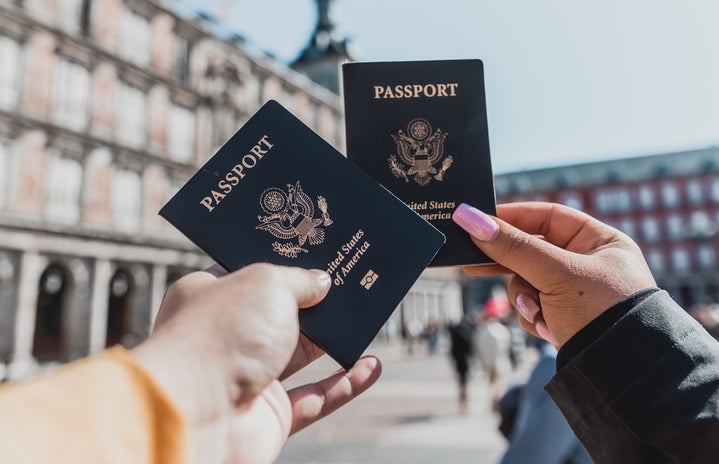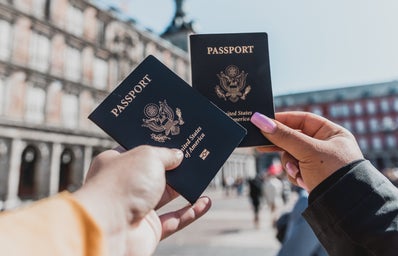Happy New Year! Or, in Spanish, ¡Feliz año nuevo! A few days after I arrived in Salamanca, I welcomed 2020 with the Spanish people and with other Hopkins students on the trip.
Just as many cultures have their own traditions for the new year, Spain welcomes January 1st a bit differently from Americans. They eat a big dinner, often with traditional foods such as turron (a nougat-like candy), and they gather around the television to watch the festivities in Madrid or, in my case, in the main plaza of the city before midnight. When the clock strikes twelve, a bell chimes twelve times, one for each month of the new year. For every chime, they eat one grape; if they can successfully eat all twelve grapes in time with the bell, then they can make a wish for the new year! Afterward, the younger population likes to go out to party and celebrate.
My host family sent me and the other two girls I stayed with to the Main Plaza to chime in the new year. We had little Ikea plastic bags full of 12 grapes each and jackets wrapped tightly around ourselves in the chill winter air. I had dreamed about this moment for many years, ever since I learned about this tradition in my sophomore year of high school!
We waited in the plaza for ten minutes, watching the clock in the Main Plaza to strike twelve. Unfortunately, we didn’t hear any bell chimes – we found out later that there had been a technical difficulty with Salamanca’s bells – so I ended up eating my 12 grapes sometime around 12:05 AM.
Salamanca is located extremely close to the Spanish-Portuguese border, so the city celebrates the new year twice: Once, when they welcome it with Madrid and the rest of Spain, and one more time with Portugal (in another time zone)! The bells rang at 1 AM, which is also when we met up with the rest of the Hopkins study abroad group. Together, with one professor from the program, we went barhopping to celebrate! In typical Spanish fashion for the new year, we got churros con chocolateat 5 AM before we went to sleep.
As a quick side-note: I can’t get enough of churros with chocolate. They’re served everywhere in Spain and there are plenty of churrerías that sell them. The churros aren’t the typical Mexican ones we see in the States; they’re, quite literally, fried sticks of dough, but that’s about it. They aren’t covered in cinnamon. They’re served with hot chocolate, but this isn’t your typical Swiss Miss hot chocolate. It’s rich, smooth, not cavity-inducingly sweet, and – for lack of a better word – super chocolatey. Imagine melting a bar of quality chocolate and dipping fried dough into it. Is there anything better?
Near the Main Plaza are the Old and New Cathedrals of Salamanca. They’re a sight to behold, and although they’re technically two separate cathedrals, they share one building. I got a chance to climb up the towers and enter both cathedrals. I love gothic architecture and cathedrals – I find the architecture just stunning – and I could not get enough of these cathedrals!
About a five- to ten-minute walk away is the Convento de San Esteban(St. Stephen’s Convent), a monastery/chapel with an imposing façade. It is gorgeous both inside and out, with a gold altar and a small garden in the center. It’s a great escape from the hustle and bustle of the city. I find the Old and New Cathedrals to be my favorite in Salamanca, but my host mom believes San Esteban is the best to visit!
If you walk a little further, past the cathedrals and down a big hill, you’ll find the Tormes River and a wide stone bridge stretching across it: the Roman Bridge of Salamanca. The branches on the nearby shore were barren, but I still saw a few duck families swimming down the stream and a man fishing further down the bank. You can get great views of the cathedrals from here, and it’s lit up with brilliant lights at night. It’s gorgeous.

